-
 Bitcoin
Bitcoin $105,185.0222
-2.35% -
 Ethereum
Ethereum $2,530.9127
-7.54% -
 Tether USDt
Tether USDt $1.0004
0.02% -
 XRP
XRP $2.1334
-4.79% -
 BNB
BNB $651.2884
-1.72% -
 Solana
Solana $145.3326
-7.75% -
 USDC
USDC $0.9997
-0.01% -
 Dogecoin
Dogecoin $0.1769
-5.64% -
 TRON
TRON $0.2693
-1.64% -
 Cardano
Cardano $0.6325
-7.03% -
 Hyperliquid
Hyperliquid $40.5973
-4.58% -
 Sui
Sui $3.0228
-9.21% -
 Chainlink
Chainlink $13.1589
-8.35% -
 Bitcoin Cash
Bitcoin Cash $433.5167
-0.81% -
 UNUS SED LEO
UNUS SED LEO $9.0344
1.96% -
 Avalanche
Avalanche $19.0874
-8.76% -
 Stellar
Stellar $0.2581
-5.56% -
 Toncoin
Toncoin $2.9795
-6.23% -
 Shiba Inu
Shiba Inu $0.0...01189
-5.12% -
 Hedera
Hedera $0.1556
-7.28% -
 Litecoin
Litecoin $84.5521
-4.68% -
 Polkadot
Polkadot $3.7768
-6.59% -
 Ethena USDe
Ethena USDe $1.0002
-0.02% -
 Monero
Monero $309.8669
-5.04% -
 Dai
Dai $0.9997
-0.02% -
 Bitget Token
Bitget Token $4.5091
-3.15% -
 Uniswap
Uniswap $7.4994
-5.08% -
 Pepe
Pepe $0.0...01080
-10.34% -
 Aave
Aave $282.7576
-6.18% -
 Pi
Pi $0.5644
-9.37%
How to set the price momentum indicator? How many periods are used for short-term?
Set up the price momentum indicator on TradingView, MT4, or Binance with 10-14 periods for short-term crypto trading; combine with other indicators for best results.
Jun 09, 2025 at 11:14 am
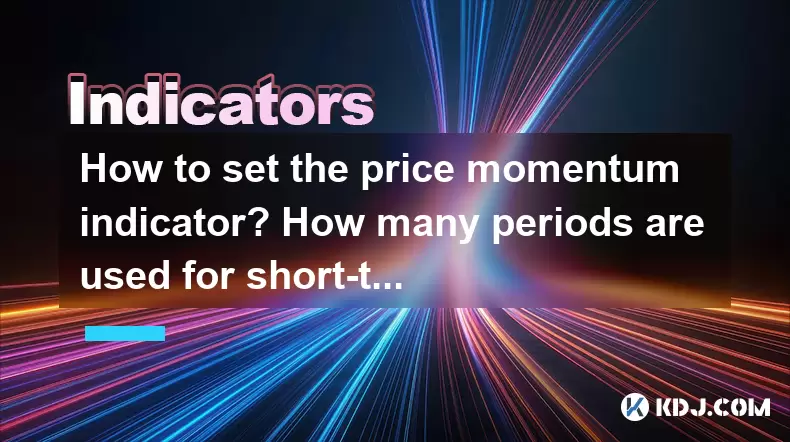
How to Set the Price Momentum Indicator? A Comprehensive Guide
The price momentum indicator is a crucial tool for traders in the cryptocurrency market, allowing them to gauge the strength and direction of price movements. This article will provide a detailed walkthrough on how to set up the price momentum indicator, focusing particularly on the settings for short-term periods.
Understanding the Price Momentum Indicator
The price momentum indicator measures the rate of change in the price of an asset over a specified period. It helps traders identify potential trend reversals and continuations by comparing current prices to past prices. The formula for calculating momentum is simple: Momentum = Current Price - Price n periods ago. A positive value indicates an upward momentum, while a negative value suggests a downward momentum.
Choosing the Right Trading Platform
Before setting up the price momentum indicator, you need to select a trading platform that supports technical analysis tools. Popular platforms among cryptocurrency traders include TradingView, MetaTrader 4, and Binance. Each platform may have slight variations in how the indicator is set up, but the general process remains similar.
Setting Up the Price Momentum Indicator on TradingView
TradingView is widely used for its user-friendly interface and comprehensive set of technical indicators. Here’s how to set up the price momentum indicator on TradingView:
- Open TradingView and select the cryptocurrency pair you want to analyze.
- Click on the 'Indicators' button located at the top of the chart.
- Search for 'Momentum' in the search bar and select the Momentum indicator from the list.
- Adjust the settings by changing the 'Length' parameter. This value determines the number of periods used for the calculation. For short-term analysis, a common setting is 10 to 14 periods.
Setting Up the Price Momentum Indicator on MetaTrader 4
MetaTrader 4 is another popular platform for trading cryptocurrencies. Here’s how to set up the price momentum indicator on MT4:
- Open MetaTrader 4 and select the chart of the cryptocurrency pair you want to analyze.
- Navigate to 'Insert' > 'Indicators' > 'Oscillators' > 'Momentum'.
- A dialog box will appear where you can set the 'Period' parameter. For short-term analysis, set this to 10 to 14 periods.
- Click 'OK' to apply the indicator to your chart.
Setting Up the Price Momentum Indicator on Binance
Binance offers trading tools directly within its platform. Here’s how to set up the price momentum indicator on Binance:
- Log into your Binance account and go to the trading section.
- Select the cryptocurrency pair you want to analyze.
- Click on the 'Indicators' tab on the chart.
- Search for 'Momentum' and select it from the list.
- Adjust the 'Period' parameter to 10 to 14 periods for short-term analysis.
Interpreting the Price Momentum Indicator
Once the price momentum indicator is set up, you need to understand how to interpret its signals. A rising momentum line indicates increasing bullish momentum, while a falling momentum line suggests increasing bearish momentum. Crossovers above or below the zero line can signal potential buy or sell opportunities. For short-term trading, focus on quick changes in the momentum line.
Short-Term Periods for the Price Momentum Indicator
For short-term trading, the number of periods used in the price momentum indicator is crucial. Short-term periods typically range from 10 to 14 periods. This setting allows traders to capture quick price movements and make timely trading decisions. Here’s why these periods are preferred:
- 10 periods provide a very short-term view, suitable for scalping or day trading. This setting is highly sensitive to price changes, allowing traders to react quickly.
- 12 periods offer a slightly longer view, balancing sensitivity with stability. This setting is often used by traders who want to capture short-term trends without being overly reactive to minor price fluctuations.
- 14 periods are used by traders looking for a bit more stability in their short-term analysis. This setting is less sensitive than 10 or 12 periods but still captures short-term momentum shifts effectively.
Adjusting the Price Momentum Indicator for Different Cryptocurrencies
Different cryptocurrencies may require different settings for the price momentum indicator due to their unique volatility and trading patterns. For highly volatile cryptocurrencies like Bitcoin (BTC) or Ethereum (ETH), shorter periods such as 10 or 12 might be more effective. For less volatile cryptocurrencies, a setting of 14 periods could provide a clearer picture of momentum.
Using the Price Momentum Indicator in Conjunction with Other Indicators
To enhance the effectiveness of the price momentum indicator, many traders use it in conjunction with other technical indicators. Here are some common combinations:
- Momentum and Moving Averages: Use the momentum indicator to confirm signals from moving averages. A rising momentum line above the zero line, combined with a price above the moving average, can signal a strong bullish trend.
- Momentum and RSI (Relative Strength Index): The RSI can help confirm overbought or oversold conditions signaled by the momentum indicator. A high momentum reading combined with an overbought RSI might suggest a potential pullback.
- Momentum and MACD (Moving Average Convergence Divergence): The MACD can provide additional confirmation of momentum shifts. A bullish crossover in the MACD, combined with a rising momentum line, can reinforce a buy signal.
Practical Example: Applying the Price Momentum Indicator to Bitcoin
Let’s consider a practical example of using the price momentum indicator on Bitcoin (BTC) with a short-term setting of 12 periods:
- Open the Bitcoin chart on your preferred trading platform.
- Set the price momentum indicator to 12 periods.
- Monitor the momentum line for crossovers above or below the zero line. A crossover above the zero line could signal a potential buy opportunity, while a crossover below might suggest a sell opportunity.
- Combine the momentum indicator with other tools like moving averages or RSI to confirm signals. For instance, if the momentum line crosses above the zero line and the price is above the 50-day moving average, it could be a strong buy signal.
Fine-Tuning the Price Momentum Indicator
To maximize the effectiveness of the price momentum indicator, consider fine-tuning its settings based on your trading style and the specific cryptocurrency you are analyzing. Experiment with different period settings to find what works best for your trading strategy. Keep a trading journal to record how different settings perform over time, helping you refine your approach.
Frequently Asked Questions
Q: Can the price momentum indicator be used for long-term trading?
A: Yes, the price momentum indicator can be used for long-term trading by adjusting the period setting to a higher number, such as 20 to 30 periods. This setting will provide a broader view of the market's momentum, suitable for identifying longer-term trends.
Q: How does the price momentum indicator differ from the Relative Strength Index (RSI)?
A: The price momentum indicator measures the rate of change in price over a specified period, while the RSI measures the speed and change of price movements to determine overbought or oversold conditions. The momentum indicator focuses on the direction of price movement, whereas the RSI focuses on the magnitude of price changes.
Q: Is the price momentum indicator effective for all cryptocurrencies?
A: The effectiveness of the price momentum indicator can vary depending on the volatility and trading volume of the cryptocurrency. It tends to be more effective for highly liquid and volatile assets like Bitcoin and Ethereum, but traders should test and adjust settings for less liquid cryptocurrencies.
Q: Can the price momentum indicator be used alone, or should it always be combined with other indicators?
A: While the price momentum indicator can be used alone, it is generally more effective when used in conjunction with other technical indicators. Combining it with tools like moving averages, RSI, or MACD can provide more robust trading signals and help confirm momentum shifts.
Disclaimer:info@kdj.com
The information provided is not trading advice. kdj.com does not assume any responsibility for any investments made based on the information provided in this article. Cryptocurrencies are highly volatile and it is highly recommended that you invest with caution after thorough research!
If you believe that the content used on this website infringes your copyright, please contact us immediately (info@kdj.com) and we will delete it promptly.
- The Next Floki Inu? Why Arctic Pablo Coin ($APC) Could Be the Next Big Meme Coin
- 2025-06-14 02:50:12
- Top 3 Cryptocurrency Presales to Buy Now in 2025: Nexchain, WeWake Finance, and Aigent Network
- 2025-06-14 02:50:12
- 1976 Bicentennial Quarter Could Be Worth $2.5 Billion
- 2025-06-14 02:45:12
- Trove of 1,720 “Napoléons” gold coins discovered in a modest stone house
- 2025-06-14 02:45:12
- Ethereum (ETH) ETF Inflows Hit 4-Month Highs, BlackRock's iShares Ethereum Trust (ETHA) Dominates
- 2025-06-14 02:40:12
- Bitcoin Price (BTC Price) Fell Down to USD 1,08,000 Today
- 2025-06-14 02:40:12
Related knowledge
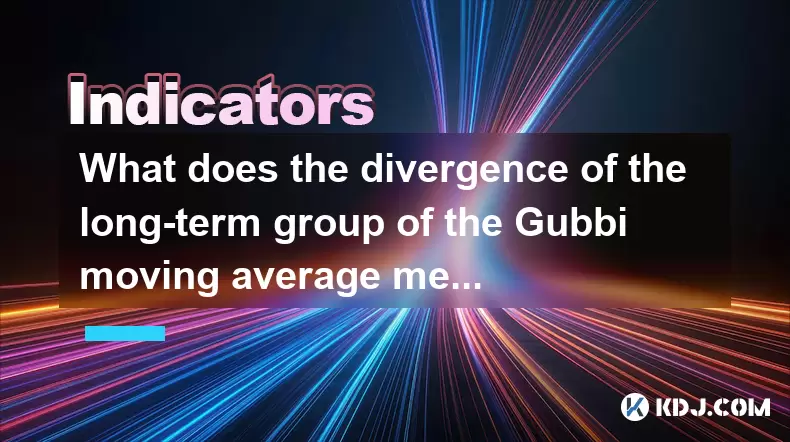
What does the divergence of the long-term group of the Gubbi moving average mean? How long can the trend last?
Jun 14,2025 at 02:56am
Understanding the Gubbi Moving AverageThe Gubbi moving average is a technical indicator used by traders in cryptocurrency markets to identify trends and potential reversals. Unlike traditional moving averages, the Gubbi variant incorporates unique calculations that emphasize price momentum and volatility adjustments. This makes it particularly useful fo...
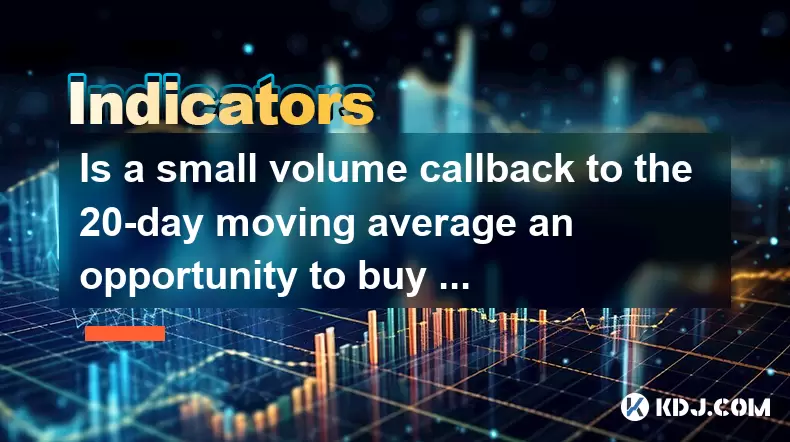
Is a small volume callback to the 20-day moving average an opportunity to buy low? What is the key to look at?
Jun 14,2025 at 02:28am
Understanding the 20-Day Moving Average in Cryptocurrency TradingIn cryptocurrency trading, the 20-day moving average (20DMA) is a commonly used technical indicator that helps traders assess the short-term trend of an asset. It calculates the average price of a cryptocurrency over the last 20 days and smooths out price volatility. When a coin experience...
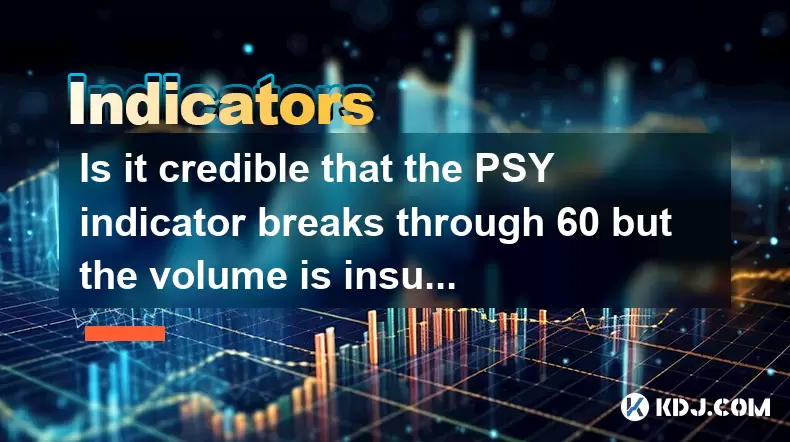
Is it credible that the PSY indicator breaks through 60 but the volume is insufficient?
Jun 14,2025 at 12:14am
Understanding the PSY Indicator in Cryptocurrency TradingThe Psychological Line (PSY) indicator is a momentum oscillator used primarily to measure the sentiment of traders and investors in financial markets, including the cryptocurrency space. It calculates the ratio of days where prices closed higher versus lower over a specified period, typically 12 o...
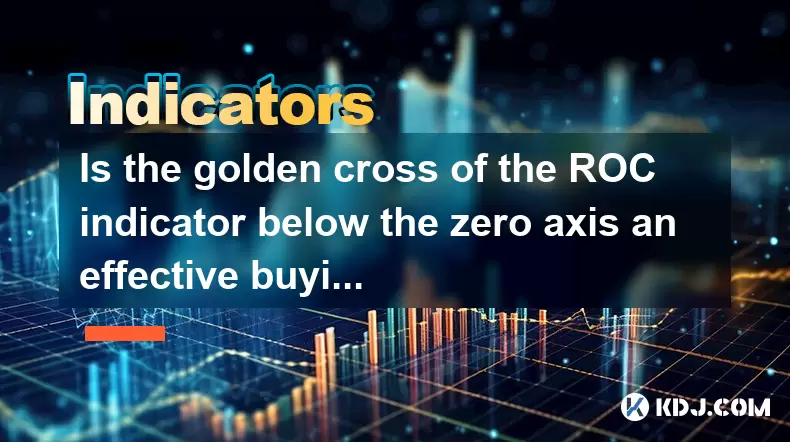
Is the golden cross of the ROC indicator below the zero axis an effective buying point?
Jun 14,2025 at 01:29am
Understanding the ROC Indicator and Its SignificanceThe Rate of Change (ROC) indicator is a momentum oscillator used in technical analysis to measure the percentage change in price between the current closing price and the closing price from a set number of periods ago. This tool helps traders assess the speed at which prices are changing, offering insi...
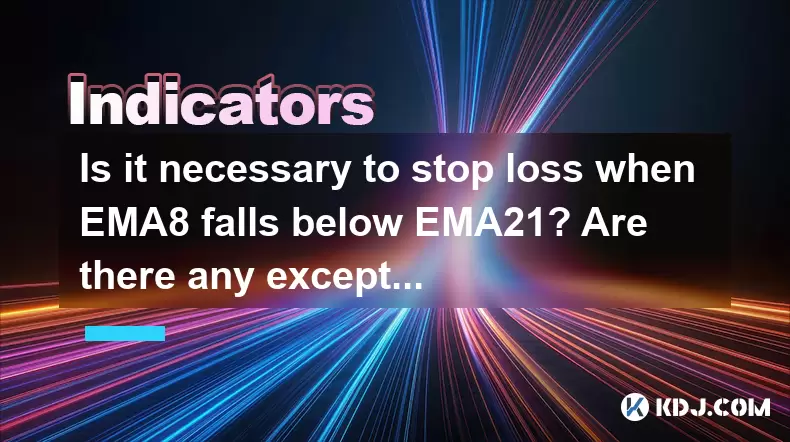
Is it necessary to stop loss when EMA8 falls below EMA21? Are there any exceptions?
Jun 14,2025 at 02:42am
Understanding EMA8 and EMA21 in Cryptocurrency TradingIn cryptocurrency trading, Exponential Moving Averages (EMAs) are widely used technical indicators to identify trends and potential reversal points. The EMA8 refers to the 8-period exponential moving average, while EMA21 is the 21-period EMA. These tools help traders make informed decisions by smooth...

Will the RSI fall after the top divergence? How to improve the judgment accuracy?
Jun 13,2025 at 11:21pm
Understanding RSI and Top Divergence in Cryptocurrency TradingThe Relative Strength Index (RSI) is a momentum oscillator widely used in cryptocurrency trading to measure the speed and change of price movements. It typically ranges from 0 to 100, with levels above 70 considered overbought and below 30 considered oversold. In crypto markets, where volatil...

What does the divergence of the long-term group of the Gubbi moving average mean? How long can the trend last?
Jun 14,2025 at 02:56am
Understanding the Gubbi Moving AverageThe Gubbi moving average is a technical indicator used by traders in cryptocurrency markets to identify trends and potential reversals. Unlike traditional moving averages, the Gubbi variant incorporates unique calculations that emphasize price momentum and volatility adjustments. This makes it particularly useful fo...

Is a small volume callback to the 20-day moving average an opportunity to buy low? What is the key to look at?
Jun 14,2025 at 02:28am
Understanding the 20-Day Moving Average in Cryptocurrency TradingIn cryptocurrency trading, the 20-day moving average (20DMA) is a commonly used technical indicator that helps traders assess the short-term trend of an asset. It calculates the average price of a cryptocurrency over the last 20 days and smooths out price volatility. When a coin experience...

Is it credible that the PSY indicator breaks through 60 but the volume is insufficient?
Jun 14,2025 at 12:14am
Understanding the PSY Indicator in Cryptocurrency TradingThe Psychological Line (PSY) indicator is a momentum oscillator used primarily to measure the sentiment of traders and investors in financial markets, including the cryptocurrency space. It calculates the ratio of days where prices closed higher versus lower over a specified period, typically 12 o...

Is the golden cross of the ROC indicator below the zero axis an effective buying point?
Jun 14,2025 at 01:29am
Understanding the ROC Indicator and Its SignificanceThe Rate of Change (ROC) indicator is a momentum oscillator used in technical analysis to measure the percentage change in price between the current closing price and the closing price from a set number of periods ago. This tool helps traders assess the speed at which prices are changing, offering insi...

Is it necessary to stop loss when EMA8 falls below EMA21? Are there any exceptions?
Jun 14,2025 at 02:42am
Understanding EMA8 and EMA21 in Cryptocurrency TradingIn cryptocurrency trading, Exponential Moving Averages (EMAs) are widely used technical indicators to identify trends and potential reversal points. The EMA8 refers to the 8-period exponential moving average, while EMA21 is the 21-period EMA. These tools help traders make informed decisions by smooth...

Will the RSI fall after the top divergence? How to improve the judgment accuracy?
Jun 13,2025 at 11:21pm
Understanding RSI and Top Divergence in Cryptocurrency TradingThe Relative Strength Index (RSI) is a momentum oscillator widely used in cryptocurrency trading to measure the speed and change of price movements. It typically ranges from 0 to 100, with levels above 70 considered overbought and below 30 considered oversold. In crypto markets, where volatil...
See all articles

























































































